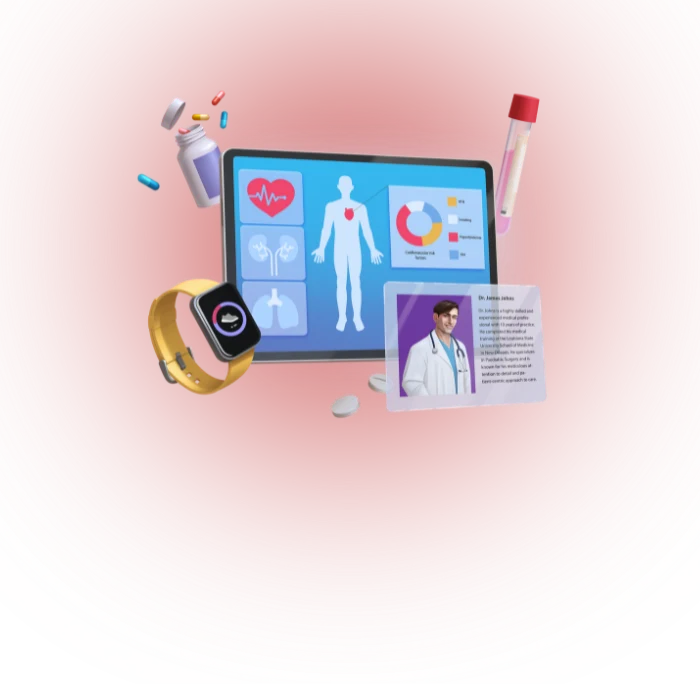What is the software development process and why it matters
Teams use a software development process to turn goals into running code with fewer surprises. The process gives shared language, expected checkpoints, and a steady pace. Projects move with intent rather than hope, which saves money and nerves over time. Solid structure makes even complex releases feel calm and controlled.
Definition of software development process in simple terms
The software development process is a repeatable way to go from needs to a working system. Work flows through stages such as planning, design, coding, testing, release, then upkeep. Each stage has clear inputs and outputs so progress stays visible. This predictable shape lets Project Managers forecast dates and stop scope drift early.
Importance of following a structured process
Following a structure makes tradeoffs visible and decisions easier to explain. Stakeholders know why a cut happens and when it returns. Risk scans land before expensive work starts, which avoids late rewrites that drain morale. Clear stages also help new teammates join faster since handovers feel obvious rather than fuzzy.
Common challenges without a clear process
Missing structure usually leads to shifting goals and half baked features that limp into production. Timelines wobble because nobody owns the next move. Tests land late, bugs pile up, and confidence drops. Cost grows in odd places, like support tickets and night fixes. Teams still work hard, yet outcomes feel random.
Key stages of the software development process
Practical process breaks delivery into stages with measurable outcomes. You plan what to build, shape the system, write code in small slices, test with intent, ship in controlled steps, then keep the product healthy. The same map fits startups and large firms by scaling the detail, not the spirit.
Phase 1: Requirement gathering and stakeholder analysis
Requirement gathering finds what users truly need and what success means in plain terms. Stakeholders include buyers, operators, support staff, and security teams. Good sessions capture must haves and nice to haves with reasons. We also map constraints such as budget, legal needs, and integration points so design choices do not break later.
Phase 2: System design and architecture planning
Design turns needs into structure that engineers can build safely. Teams sketch modules, pick storage patterns, and mark risky parts for spikes. Interfaces get named, and data flows get tested with small examples. Decisions include why this path beats that one, so future readers can trust the sketch. The goal is clarity rather than cleverness.
Phase 3: Development and coding process overview
Coding converts the design into maintainable units with tests close by. Work breaks into tickets with a clear definition of done that includes peer review and basic checks. Small pull requests keep context fresh and reduce merge pain. Regular builds run on a shared pipeline so regressions surface early rather than surprising a late tester.
Phase 4: Software testing for quality assurance
Testing shows whether the system behaves as promised under normal and odd conditions. Coverage is not just numbers, it is confidence that key flows hold steady. Teams mix unit checks, service checks, and end to end runs on real like enviroments. Issues get triaged with impact in mind so fixes land where users feel them first.
Phase 5: Deployment and release management
Release management plans how changes reach users with minimal risk. Teams prefer staged rollouts, feature flags, and instant rollbacks for safety. Notes explain behavior shifts in simple words. Monitoring starts at launch, not days after, so a spike in errors gets caught early. Clean ownership keeps on call engineers focused and calm.
Phase 6: Maintenance and future updates
Maintenance keeps the product healthy and useful long after launch. Teams schedule dependencies, audit logs and keys, and trim unused features. User feedback fuels small improvements that remove friction. Roadmaps stay flexible yet grounded in real signals. Planned upkeep costs less than emergency fixes that arrive during holidays or late nights.
What are the different software development models
Models give teams different ways to move through the same stages. Waterfall fits locked scope and stable rules. Agile suits evolving goals with tight feedback. Iterative blends planned waves with learning. DevOps focuses on flow from commit to production. Model choice should fit the context rather than a trend.
Waterfall model explained with pros and cons
Waterfall runs stages in set order from requirements to maintenance. Strengths include clear documentation and easy vendor contracts. It works best where rules change slowly and verification is formal. Limits show up when late insights arrive, since change requests pile up. Teams can finish on time yet miss what users learned mid project.
Agile development methodology for modern teams
Teams using Agile software development methodologies in small cycles and show progress often. Backlogs carry user centered stories, each with acceptance checks. Reviews pull feedback into the next sprint without drama. This style thrives when priorities move with the market and learning is prized. Discipline still matters, otherwise sprints turn into chaotic busywork with no throughput.
Iterative and incremental approach
Iterative delivery ships a thin working slice, then grows depth over cycles. Each pass tightens scope, improves quality, and gathers signals from real use. Stakeholders see value early rather than waiting for a big reveal. This model helps reduce sunk cost since poor bets get trimmed before they anchor the roadmap.
DevOps culture and continuous delivery
DevOps links development and operations to improve flow and reliability. Teams automate builds, tests, and releases so changes travel safely from commit to users. Shared dashboards keep everyone honest about latency, errors, and capacity. The idea is less handoff, more learning, and faster recovery when things break. Continuous delivery supports that rhythm.
How to choose the right model for your project?
Select based on change rate, compliance needs, integration load, and team maturity. Fixed scope with long lead contracts may suit Waterfall gates. Evolving products with weekly feedback suit Agile or Iterative waves. Heavy uptime goals and frequent updates benefit from DevOps. Write the fit notes down so future readers know why the choice made sense.
Why should businesses follow a structured SDLC?
Structured SDLC reduces chaos, brings measurable checkpoints, and keeps people aligned on what matters. Risks get found early, not during late crunch weeks. Costs remain transparent because rework drops and testing starts sooner. Managers gain leverage through clarity rather than pressure, which helps retain the good folks who ship the hard work.
Reduced project risks and cost overruns
Clear stages force early discovery of unknowns such as vendor limits or data rules. That trims surprise expenses and shields the schedule. Testable stories and steady demos avoid long periods of false certainty. Finance teams see spend tied to outcomes rather than vague effort. The result is fewer fire drills and calmer weekends.
Better alignment with business goals
Goals become real when they are linked to expected behaviors and simple metrics. Stakeholders can tell whether a feature moved the needle or just felt nice in slides. Roadmaps change with evidence rather than opinions. People stop arguing in meetings and start iterating on facts. That habit builds trust across product, engineering, and finance.
Improved quality and user satisfaction
Quality grows when feedback arrives early and often. Users get quick fixes for nagging issues, which earns patience for bigger moves. Support teams pass real notes to builders, not blame. Engineers take pride in simpler flows that reduce clicks and errors. Satisfaction rises because value becomes obvious in daily work.
What is the difference between SDLC and Agile?
Think of SDLC as the overall map of stages from idea to upkeep. Agile is a way of moving through that map with short cycles and fast learning. You can run Agile inside SDLC, or choose Waterfall inside SDLC, based on context. The two are not rivals, they are different layers of planning.
SDLC as a framework of steps
SDLC defines the steps every software effort should consider. Planning, design, implementation, testing, deployment, and maintenance cover the full journey. Teams adapt the depth of each step to match risk and budget. The map also supports audits and training since artifacts align to known stages across the company.
Agile as a flexible way of working
Agile brings time boxed cycles, close collaboration, and real demos. Scope flexes to keep dates while protecting quality. Product owners order work by user value rather than loud requests. Engineers get feedback soon after a change ships to a pilot group. The mix of speed and learning makes this style fit most modern teams.
When to use one over the other
Use a formal stage gate model for heavy compliance, long approvals, or big vendor chains. Use Agile inside SDLC when discovery is active and user signals matter weekly. Many firms blend them by locking key milestones while letting sprints flow under the hood. The label matters less than honest feedback and working software.
Best practices for a successful software development process
Good process is less ceremony and more habits that hold under pressure. Keep feedback near the work. Keep changes small. Keep ownership clear. Measure the flows that users touch. The details below show where a Project Manager can add leverage without adding needless steps.
Clear communication with stakeholders
Communication gets useful when updates map to goals and risks rather than raw tasks. Short status notes explain what moved, what stalled, and where a decision is needed. Demos speak better than slides, so show the thing. Keep channels quiet and consistent so people trust the ritual and actually read it.
Building a skilled development team
Strong teams share code style, testing habits, and review norms. Hiring checks for curiosity and care, not only hard skills. Growth plans keep seniors from topping out and juniors from drifting. Clear roles prevent duplicate effort and empty gaps. Healthy teams learn in public and fix mistakes without fear or blame.
Using project management tools effectively
Tools should serve the plan rather than dictate it. Boards reflect real states, not wishful thinking. Dashboards track flow and defects that users feel. Alerts route to owners who can act, not large rooms. Reports stay short to protect focus. People trust numbers when the inputs are simple and visible.
Testing and feedback loops at each stage
Feedback loops make quality a property of the process, not a final phase. Pipelines run tests on each change, run scans on each build, and push safe pilots. Users get short surveys that ask specific tasks, not vague feelings. Every loop returns into the backlog with a clear next step and owner.
Common mistakes in software development process to avoid
The biggest mistakes are not flashy, They are small misses that repeat until trust drops. People skip discovery, push dates that ignore capacity, or bolt on tests at the end. These patterns create noise that hides the real goal. The cure is routine clarity and short honest loops.
Ignoring user requirements
Skipping discovery leads to features that look right yet solve nothing. Interviews and shadow sessions reveal where time vanishes for users. Tiny prototypes expose missing steps. Clear evidence keeps the roadmap from chasing opinions. The cost of early study is tiny compared to late fixes after a confused launch.
Skipping documentation and testing
Documentation is memory that keeps teams from repeating the same miss. Tests do the same for code. Writing both feels slow in the moment. Later, they pay back every week by stopping regressions and easing new hires. Keep docs light and useful rather than perfect novels nobody reads.
Poor planning and unrealistic deadlines
Dates mean little if capacity is a guess. Honest plans start with team size, focus time, and integration load. Buffers guard against surprises that always show up. Leaders who protect the plan earn trust and better throughput. People do their best work when the calendar respects reality.
How much does the software development process cost?
Cost depends on scope, skill mix, compliance needs, and integration depth. Hidden expenses often sit in data migration, third party limits, and ongoing maintainence. A good estimate ties features to user outcomes, then prices teams and time windows. Smooth delivery costs less than heroics that chase a risky date.
Factors that affect software development cost
Primary drivers include team size, experience, and the number of systems in play. Tooling, hosting, and data volumes matter as well. Regulatory needs increase testing and audit work. Long support windows raise the total cost across years. Plans that fix goals and flex scope keep spending steady without hurting quality.
Hidden costs to be aware of
Hidden costs hide in support tickets, long runbooks, and brittle integrations. Security reviews can delay signoff if started late. Change management for users takes real time and should be budgeted. Delays from vendor limits also add up. Writing these risks down early lets finance and delivery plan together without finger pointing.
Cost saving tips for startups and enterprises
Cut waste by shipping thin slices to real users, then learn before scaling. Limit bespoke builds when a proven module fits. Focus tests on core flows that protect revenue and trust. Invest in telemetry so problems surface before a customer calls. Careful reuse beats risky shortcuts that pile debt.
What tools and technologies support software development?
Tools keep work visible and repeatable. Pick ones that your team can learn fast and actually maintain. Standardize where it helps, yet avoid bloated stacks that slow people down. Fewer well used tools beat a shelf of shiny yet forgotten logins. The list below shows simple options that play well together.
Top Tools For Eficient Software Development Monitoring
Project management and collaboration tools
Project tools organize work and reduce status meetings. Boards show where tickets sit and why. Work in progress limits keep focus. Templates enforce solid definitions of done and acceptance checks. Shared docs and chat threads capture decisions for later reading. The tool matters less than consistent habits around it.
Version control systems like Git
Version control records every change and connects it to context. Branch rules and reviews stop risky pushes from reaching main. Small pull requests make feedback quick to process. Tagged releases give support teams confidence when triaging issues. History also supports audits by linking decisions to code without endless digging.
Continuous integration and deployment tools
Pipelines automate builds, tests, and delivery so teams move safely. Each push triggers checks and produces artifacts. Release jobs promote code through stages with guardrails. Feature flags keep risky changes dark until they are ready. Rollback plans are tested, not just written. Healthy pipelines turn outages into quick recoveries.
How the software development process benefits startups?
Startups win when they ship learning early, not just features. A steady process shrinks cycle time and exposes real signals faster. Founders avoid costly pivots by testing with small groups. Investor updates stay concrete because metrics connect to staged outcomes. Good rhythm beats luck, even during noisy weeks.
Faster time to market and scalability
Thin slices reach users early, which shortens the time between idea and value. Teams spot scale issues while the surface is still small. This avoids big rewrites that can sink a young roadmap. Partners and early customers see progress in real screens, which helps close the next milestone.
Avoiding costly rework in later stages
Early testing and pilot programs reveal gaps before marketing books a date. Clear acceptance checks prevent surprise rework near launch. Data from usage guides what to keep and what to drop. Startups that treat rework as a signal to refine, not a shame, improve faster and retain energy.
Software development process for enterprise level projects
Enterprises face complex data estates, legacy systems, and strict rules. A strong process creates calm across many teams by making dependencies visible. Security and compliance integrate into each stage rather than block at the end. Rollouts coordinate through change windows that respect operations and peak seasons.
Managing complex requirements and integrations
Large efforts depend on clear interface contracts, sandbox enviroments, and steady integration tests. Teams publish mocks so parallel work can proceed without stalls. Dedicated coordination roles track cross team risks and set shared milestones. Leadership clears decisions quickly to avoid drift. Good governance feels helpful, not heavy.
Ensuring compliance and security measures
Compliance grows easier when evidence is produced as a side effect of daily work. Security checks run in pipelines and on pull requests. Access follows least privilege with reviews on a schedule. Audit trails link change tickets, code, and releases. People sleep better when controls are built in rather than bolted on.
Future trends shaping the software development process
Trends matter only if they solve real delivery pain. Automation will keep trimming time from repeats. Modern platforms reduce setup toil. Cloud enviroments make parity between dev and prod more realistic. Teams that pair these with good habits will move faster without gambling on risky shortcuts.
AI and automation in SDLC
AI helps generate tests, catch defects, and draft code that humans refine. Pipelines learn typical failure patterns and flag risky changes. PMs get better forecasts from flow data rather than gut feel. Guardrails remain key so automation supports people and does not create odd new risks.
Low code and no code platforms
Low code speeds simple workflows where rules are clear and integration is modest. Citizen developers can solve team specific needs with oversight. Engineering stays in the loop for core systems and complex flows. The sweet spot is extensions and reports rather than rewriting the main product in a builder.
Cloud based development environments
Cloud dev enviroments cut setup time and drift across laptops. New hires open a link and get the right stack in minutes. Teams share templates and reusable tasks. Costs remain visible since usage is tied to projects. Reliable parity means fewer bugs that only show up after release.
Conclusion
Strong process creates calm delivery, clear choices, and steady learning. You do not need more ceremony, you need small proof that repeats. If your next sprint feels noisy, start by shortening feedback loops and writing decisions down.
If you want a planning session, pick one product goal and we will sketch a two week map with risks, small proofs, and a first release window.
FAQs
What is SDLC (Software Development Life Cycle)?
SDLC is a set of steps that guide teams from idea to working software. The stages cover planning, design, implementation, testing, deployment, and maintenance. This framework reduces risk and helps teams measure progress with simple checkpoints that leaders and engineers both understand.
What is PDLC (Product Development Life Cycle)
PDLC focuses on the full product journey from concept, market fit, and pricing through design, build, launch, and growth. It blends discovery with delivery so roadmaps react to user signals rather than opinion.
How can I speed up software development processes?
To speed up software development processes while maintaining quality, you can implement a combination of Agile project management strategies, best practices, and tools tailored to your team’s needs.
1. Adopt Agile Methodologies
2. Automate Repetitive Development Tasks
3. Communicate with Team Daily
4. Use best tools
5. Optimize Development process
Which software development methodology is the best?
No single methodology wins in every case. Pick based on change rate, compliance needs, and team maturity. Agile fits evolving goals with weekly feedback. Waterfall fits locked scope and formal signoffs.






